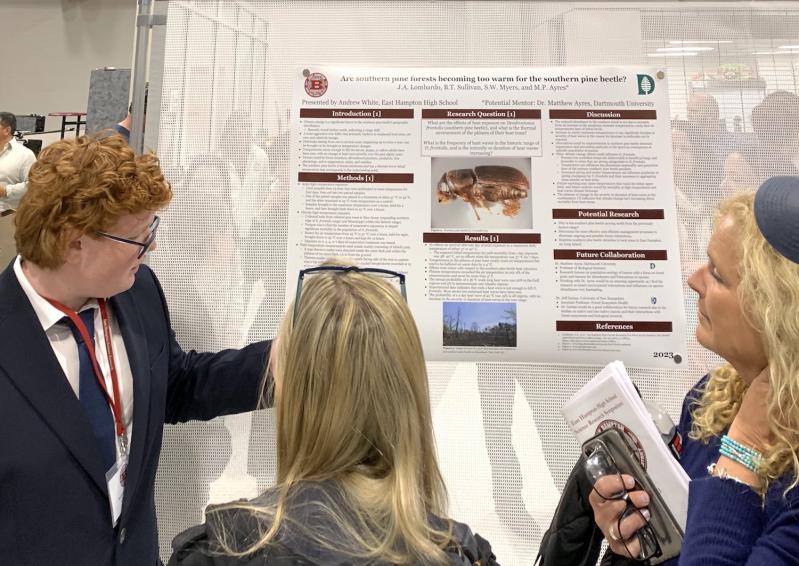East Hampton School District voters could see a ballot referendum in May for capital projects that would create an independent science lab at the high school and a revitalized playground at the John M. Marshall Elementary School.
The principals of the two schools brought their proposals to the East Hampton School Board on Tuesday night. Each would be funded with capital reserve money, a sort of savings account used by the district for major projects, said Sam Schneider, a school business official. Right now, there is about $4.8 million in the fund. Use of that money does not impact taxes, but must be approved by district residents.
Since its inception in 2015, the independent science research lab, a program that allows high school students to research topics under the guidance of a Ph.D. or M.D., has grown from 10 students to 75 students.
As such, Sara Smith, the high school principal, said that the program has outgrown the space currently available to it. Improvements to the classroom would further elevate the program.
“Our growth is not just in numbers; it is in student accomplishments,” Ms. Smith said. For instance, one student got to conduct research at the Brookhaven National Laboratory, while another has been published in a peer-reviewed journal.
A committee researched the needs of the students involved with the program, finding ultimately that students require a greenhouse, as many are interested in plant sciences, and additional space to practice their presentation skills.
“Above everything else, the college and career readiness it provides for our students who are in the program is second to none,” Ms. Smith continued. With that, the new floor plan included a space for teachers and advisers to talk with students about confidential matters in a separate room.
Additionally, Ms. Smith wants to ensure that the proposed space will last into the future: “We really need the space to work for 2025 and also be flexible enough to work for students in 2045.”
“The great thing about this is we’re taking existing space and restructuring it,” Mr. Schneider said when Ms. Smith was finished. Further, the proposal includes separate temperature controls so that students can experiment without affecting the rest of the school.
Karen Kuneth, the principal of the elementary school, discussed the proposed playground improvements. The school formed a “playground committee,” which looked at other districts to determine what students want in a playground.
The committee found that swings should be enclosed, equipment should be conducive to running and climbing, and that it should be accessible to all students, “regardless of ability.”
Aside from the committee, the school officials also spoke with students, as “it was very important to get their input on the new playground.” Students, they found, “wanted space to sit and chat with one another, not just play.”
Ms. Kuneth proposed using artificial turf for the renovated playground, as it has seen “great success” at other schools. As for its benefits, turf is handicapped accessible and requires little maintenance, she said.
When she finished her presentation, Mr. Schneider added that “it really will improve the look of the entire area.”
In total, the projected cost of the project is around $1.44 million, while the proposed science lab would require around $1.85 million, bringing the total cost on the ballot to some $3.25 million.
The presenters also discussed the start date for the playground. “I think we can all agree that having an elementary school without a playground is a nonstarter,” said Mr. Schneider.
He proposed starting construction in the summer, pending voter approval, to minimize the amount of time without a fully operational playground. If the school is left without a playground, however, Ms. Kuneth assured the board that it would provide students with additional opportunities for recreation.
To access the funds in the capital reserve, the district undergoes a three-step process. First, the administration identifies needed improvements. Next, the school board reviews the plans and determines whether to put the projects to a vote. Last, voters in the district decide whether to use capital reserve funds to implement the changes.
Separately, the board approved a resolution that would exempt members of East Hampton Volunteer Ocean Rescue from certain real property taxes, in line with the current standards for volunteers with the fire department and ambulance.

